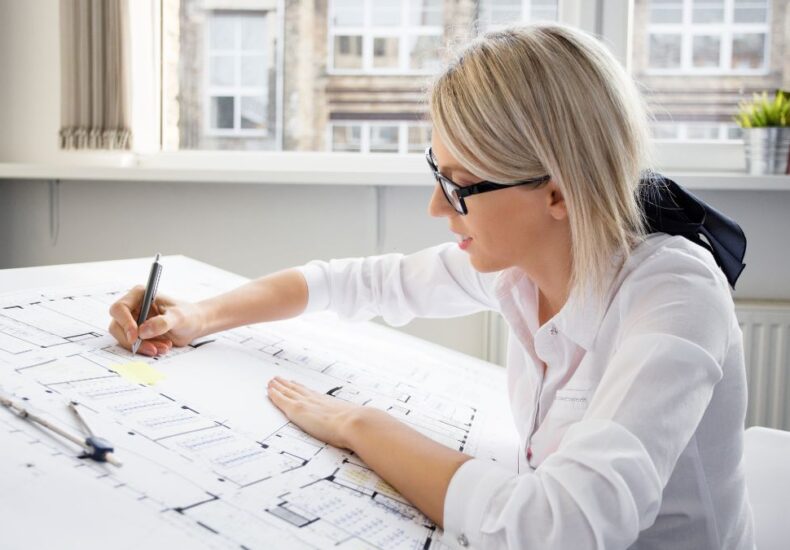
Architect Mastering Space
-
Table of Contents
- Mastering Space: The Artistry of Modern Architecture
- The Principles of Modern Architecture
- Simplicity and Minimalism
- Functionality
- Integration with Nature
- Notable Examples of Modern Architecture
- The Guggenheim Museum, Bilbao
- The Burj Khalifa, Dubai
- The Sydney Opera House, Australia
- The Impact of Technology on Modern Architecture
- Advanced Materials
- Building Information Modeling (BIM)
- Sustainable Design
- Case Studies in Modern Architecture
- The Edge, Amsterdam
- Apple Park, Cupertino
- One Central Park, Sydney
- The Future of Modern Architecture
- Smart Buildings
- 3D Printing
- Biophilic Design
- Conclusion
Architect Mastering Space: The Artistry of Modern Architecture
Modern architecture has evolved into a sophisticated blend of art and science, where the manipulation of space plays a pivotal role. This article explores the nuances of modern architectural design, highlighting key principles, notable examples, and the impact of technology on the field.
The Principles of Modern Architecture
Modern architecture is characterized by a few core principles that distinguish it from traditional styles. These principles include simplicity, functionality, and the integration of natural elements.
Simplicity and Minimalism
Simplicity is a hallmark of modern architecture. Clean lines, open spaces, and a lack of ornamentation define this approach. Minimalism not only enhances aesthetic appeal but also promotes efficiency in design and construction.
Functionality
Functionality is at the heart of modern architectural design. Buildings are designed to serve specific purposes, with every element contributing to the overall utility. This principle ensures that spaces are both practical and comfortable for their intended use.
Integration with Nature
Modern architecture often seeks to harmonize with the natural environment. This can be seen in the use of natural materials, large windows that allow for ample natural light, and designs that incorporate outdoor spaces.
Notable Examples of Modern Architecture
Several buildings around the world exemplify the principles of modern architecture. These structures not only serve their intended functions but also stand as works of art.
The Guggenheim Museum, Bilbao
Designed by Frank Gehry, the Guggenheim Museum in Bilbao, Spain, is a stunning example of modern architecture. Its flowing, organic forms and innovative use of materials have made it an iconic landmark.
The Burj Khalifa, Dubai
The Burj Khalifa in Dubai, designed by Adrian Smith, is the tallest building in the world. Its sleek, tapering form and advanced engineering make it a marvel of modern architecture.
The Sydney Opera House, Australia
Designed by Jørn Utzon, the Sydney Opera House is renowned for its unique, sail-like design. This building has become a symbol of modern architectural innovation.
The Impact of Technology on Modern Architecture
Technology has had a profound impact on modern architecture, enabling architects to push the boundaries of design and construction.
Advanced Materials
The development of advanced materials, such as high-strength concrete and steel, has allowed for the creation of taller and more complex structures. These materials provide greater flexibility and durability, enabling architects to realize their visions.
Building Information Modeling (BIM)
Building Information Modeling (BIM) is a digital tool that allows architects to create detailed 3D models of buildings. This technology facilitates collaboration, improves accuracy, and streamlines the construction process.
Sustainable Design
Technology has also enabled the development of sustainable design practices. Innovations such as green roofs, solar panels, and energy-efficient systems help reduce the environmental impact of buildings.
Case Studies in Modern Architecture
Examining specific case studies can provide valuable insights into the application of modern architectural principles and technologies.
The Edge, Amsterdam
The Edge in Amsterdam is often cited as the greenest building in the world. Designed by PLP Architecture, this office building features advanced energy management systems, extensive use of natural light, and a design that promotes employee well-being.
Apple Park, Cupertino
Apple Park, designed by Foster + Partners, is a prime example of modern corporate architecture. The circular building is not only visually striking but also incorporates numerous sustainable features, such as natural ventilation and solar panels.
One Central Park, Sydney
One Central Park in Sydney, designed by Jean Nouvel, is a mixed-use development that integrates residential, commercial, and recreational spaces. Its most notable feature is the vertical gardens that cover the building’s facade, providing a unique blend of nature and urban living.
The Future of Modern Architecture
The future of modern architecture looks promising, with ongoing advancements in technology and a growing emphasis on sustainability.
Smart Buildings
Smart buildings, equipped with advanced sensors and automation systems, are becoming increasingly common. These buildings can optimize energy use, enhance security, and improve occupant comfort.
3D Printing
3D printing technology is revolutionizing the construction industry. This technology allows for the rapid and cost-effective production of building components, enabling more innovative and customized designs.
Biophilic Design
Biophilic design, which seeks to connect occupants with nature, is gaining popularity. This approach can improve mental and physical well-being, making it an important consideration for future architectural projects.
Conclusion
Modern architecture is a dynamic and evolving field that combines artistry with functionality. By embracing principles such as simplicity, functionality, and integration with nature, architects can create spaces that are both beautiful and practical. The impact of technology, as seen in advanced materials, BIM, and sustainable design, continues to push the boundaries of what is possible. Notable examples and case studies highlight the innovative spirit of modern architecture, while future trends such as smart buildings, 3D printing, and biophilic design promise to shape the built environment in exciting new ways.
Recent Posts
- Unlocking Wealth: The Benefits of a 401(okay) to Gold IRA Rollover for Your Retirement Strategy
- Transform Your Retirement Savings: A Step-through-Step Guide to 401(ok) to Gold IRA Rollovers
- Securing Versus Economic Downturns with a 401( k) to Gold IRA Rollover
- Spending Wisely: Lessons Gained From Augusta Valuable Metals
- A Newbie’s Overview to the World of Mushroom Coffee